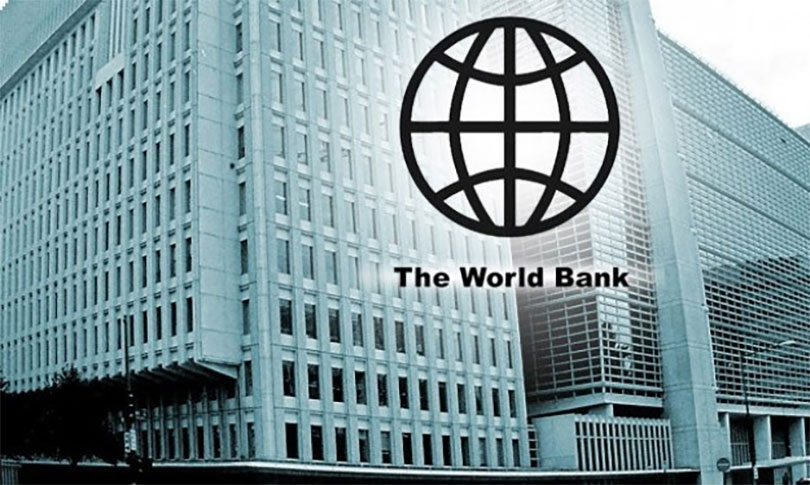COVID-19 takes heavy toll on remittance inflow

By A Staff Reporter
Kathmandu, Apr. 24: The World Bank has projected that the remittances to South Asia would decrease by 22 per cent to US$ 109 billion in 2020 against the growth of 6.1 per cent in 2019.
"The deceleration in remittances to the South Asian region in 2020 is driven by the global economic slowdown due to the coronavirus outbreak as well as oil price declines," it said in its report 'COVID-19 crisis through a migration lens’ published on Wednesday.
According to the multilateral donor, the economic slowdown is likely to directly affect remittance outflows from the United States, the United Kingdom, and European Union countries to South Asia. Falling oil prices will affect remittance outflows from the Gulf countries and Malaysia.
The United Arab Emirates, Saudi Arabia, Malaysia, Qatar, Kuwait, South Korea, Bahrain, Jordan, etc are the major destination countries for Nepali migrant workers.
According to the primary estimates of Nepal Rastra Bank, remittance inflow to Nepal in the current fiscal year 2019/20 would decrease by 10 per cent. The country had witnessed 16.5 per cent growth in remittance inflow last year.
Since most of the labour destination countries have executed lockdown in the wake of the COVID-19 pandemic, Nepali workers are either idle or losing their jobs besides looming health risks.
Nepal received Rs 879 billion remittance in the last fiscal 2018/19 while the central bank has said that the amount might not cross Rs 800 billion mark this fiscal.
The central bank has estimated about 5 per cent growth in the remittance which would raise the amount to Rs 900 billion, Dr Gunakar Bhatta, spokesperson of the NRB, said recently.
The World Bank report mentioned that South Asia had the lowest average remittance costs of any region, at 4.95 per cent due to high volumes, competitive markets and deployment of technology. It projected a sharp 20 per cent decline in global remittances in 2020 due to the economic crisis induced by the COVID-19 pandemic and shutdown.
"The projected fall, which would be the sharpest decline in recent history, is largely due to a fall in the wages and employment of migrant workers, who tend to be more vulnerable to loss of employment and wages during an economic crisis in a host country," said the WB.
Remittances to low and middle-income countries (LMICs) are projected to fall by 19.7 percent to $445 billion, representing a loss of a crucial financing lifeline for many vulnerable households, it said.
Remittance flows are expected to fall across all World Bank Group regions, most notably in Europe and Central Asia (27.5 per cent), followed by Sub-Saharan Africa (23.1 per cent), South Asia (22.1 per cent), the Middle East and North Africa (19.6 per cent), Latin America and the Caribbean (19.3 per cent), and East Asia and the Pacific (13 per cent).
Studies show that remittances alleviate poverty in lower- and middle-income countries, improve nutritional outcomes, are associated with higher spending on education, and reduce child labour in disadvantaged households. So, a fall in remittances affects families’ ability to spend on these areas as more of their finances will be directed to solve food shortages and immediate livelihoods needs.
“Remittances are a vital source of income for developing countries. The ongoing economic recession caused by COVID-19 is taking a severe toll on the ability to send money home and makes it all the more vital that we shorten the time to recovery for advanced economies,” said World Bank Group President David Malpass.
Recent News

Do not make expressions casting dout on election: EC
14 Apr, 2022
CM Bhatta says may New Year 2079 BS inspire positive thinking
14 Apr, 2022
Three new cases, 44 recoveries in 24 hours
14 Apr, 2022
689 climbers of 84 teams so far acquire permits for climbing various peaks this spring season
14 Apr, 2022
How the rising cost of living crisis is impacting Nepal
14 Apr, 2022
US military confirms an interstellar meteor collided with Earth
14 Apr, 2022
Valneva Covid vaccine approved for use in UK
14 Apr, 2022
Chair Prachanda highlights need of unity among Maoist, Communist forces
14 Apr, 2022
Ranbir Kapoor and Alia Bhatt: Bollywood toasts star couple on wedding
14 Apr, 2022
President Bhandari confers decorations (Photo Feature)
14 Apr, 2022











